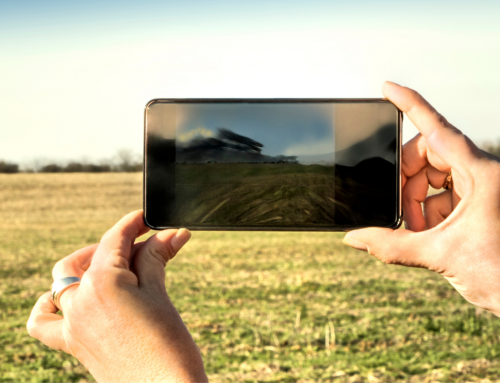My first job after finishing my journalism degree was as a reporter at BBC Radio Stoke.
Mostly it was pretty standard stuff, well within my capability. Interviewing people; writing scripts; setting up guests for shows; that kind of thing.
But one morning I got into work at 6:45am, to discover the early reporter had phoned in sick – and he was the one who went out to do the live interviews for the breakfast show. So they asked me to cover for him.
Now, in journalism, you’re waiting for opportunities like this to prove yourself, so I was always going to say yes.
But here’s the thing: I’d never done any live work before. I was terrified. In fact, my heart rate has gone up just thinking about it now!
The interview that day was at the police station, talking about the results of a knife amnesty they’d held. A pretty standard job: turn up; talk to the police about why this is important; and then describe what’d been handed in.
But when I was on air, I froze at the last point. I was confronted with hundreds of types of knives, each one more ghastly than the next, and I couldn’t think of any of their proper names other than ‘big sharp pointy thing’.
So I said the only one I could name. A butter knife. The least deadly knife there.
God, will my family let me forget it? Absolutely not. Still at meals they’ll pass me a butter knife and tell me to be careful because it’s dangerous.
But the really important point is that with a bit of planning, I could’ve easily avoided this. I should’ve asked to look at the knives before we went on air, and jotted down some descriptions.
Which is why when you’re making your videos – whether they’re live or pre-recorded – you should plan them really carefully. Script your call-to-action for the end of the video; flesh out all the points you need to cover… heck, even write some jokes down if you don’t think you’ll be able to come up with them on the spot.
Planning in this way means you know you’ve hit all the points you need to cover, you’ve thrown a little plug in for your services, and that you’re prompting your audience to do something with a relevant call-to-action.
That’s why I send all of my clients a copy of my ‘Social Media Video Planning’ worksheet. This gives you space to script your video fully, and to write down all of the shots you need to film.
Comment below or pop me an email if you’d like me to send you a copy, and talk you through how to use it.




